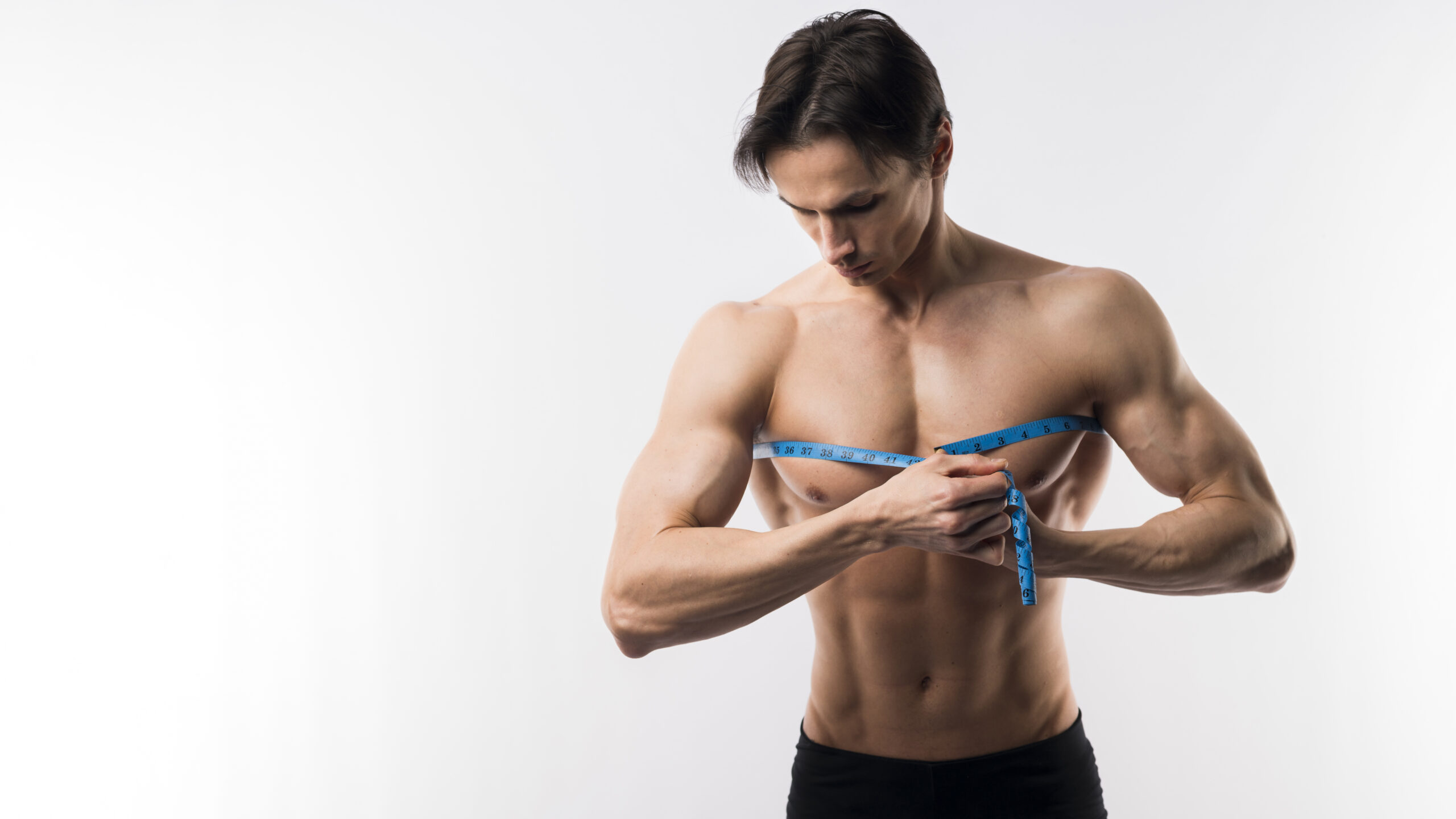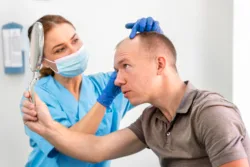Gynaecomastia surgery which is also known as “male breast enlargement” is a disorder in which men acquire a large amount of glandular breast tissue. It may impact one or both breasts, resulting in discomfort, low self-confidence, and mental suffering.
Although many people believe that surgery is the only option, the reality is more complicated. When it is caused by temporary hormonal imbalances, lifestyle choices, or consumption of drugs, non-surgical treatments may be beneficial, particularly in mild to moderate cases.
Lets discover the world of non-surgical gynaecomastia treatments to see what works and what doesn’t.
Is It Possible To Treat Gynaecomastia Without Surgery?
Yes, but it depends upon the condition’s stage, causes, and the environment.
- Within 6 to 12 months, newly developed gynecomastia can respond to medication or lifestyle modifications.
- Long-term glandular gynecomastia with fibrosis may require surgery because it typically does not improve with non-surgical methods.
Non-Surgical Treatment Options:
1. Hormonal and medical treatment
Medication may occasionally reduce glandular tissue in cases of genuine gynecomastia caused by hormonal abnormalities if recognized early.
a) SERMs, or selective estrogen receptor modulators
Tamoxifen: It helps to reduce breast tissue size and tenderness.
Raloxifene: It is sometimes used off label in men and postmenopausal women.
Effectiveness: Minimize breast tissue size and pain in the early stages.
b) Testosterone replacement therapy (TRT).
Men with hypogonadism, or low testosterone levels, are treated with testosterone replacement therapy (TRT).
It reduces gynecomastia effectively by restoring hormone balance.
2. Compression garments
Although compression clothing isn’t a permanent solution for gynecomastia, it can be an effective way to boost your self-confidence in the short term. The purpose of these specially made tight-fitting vests or undershirts is to flatten the chest tissue and reduce its puffiness beneath clothing by applying pressure on it.
Compression garments are useful in:
- To reduce self discomfort while undergoing the treatment, before the surgery.
- During surgery, improve healing, reduce swelling, and help in proper contouring of the chest during the healing process.
3. Non-surgical treatment
Several non-surgical cosmetic procedures can help reduce chest fat, especially in cases of pseudogynecomastia.
a) CoolSculpting
- It’s also known as cryolipolysis, freezes and removes abdominal fat cells.
- There is no need of surgery or needles,
- Results take two to three months to develop.
b) Radiofrequency
- To reduce fat and tighten skin, apply heat.
- It helps in chest tightening and reshaping.
The above methods only target fat, not glandular tissue. It is not suitable for dense breast tissue and moderate-to-severe gynecomastia.
4. Lifestyle changes
This is the most common and initial step in treating gynaecomastia, particularly in cases of pseudogynecomastia caused by weight.
Exercise:
- Focus on chest exercises such as dumbbell flys, push-ups, and bench presses.
- For reducing overall body fat, do cardio exercises (running, swimming, cycling)
Diet:
- Stay away from alcohol, sugary foods, junk food, and soy-based products (phytoestrogens).
- Eat more vegetables, fruits, and protein.
For those who have soft chest fat or are overweight, this is an excellent place to start.
When is Surgery the Best Option?
Surgery may be necessary if:
- Your gynecomastia has been ongoing for over a year or two.
- The tissue is more than fat; it is solid and glandular.
- You’ve tried other solutions without success.
- It results in discomfort, emotional stress or discomfort.
What surgery involves:
- Elimination of gland tissue or fat
- Minimal scars
- Healing of one or two weeks
- Results that are visible and long-lasting
Conclusion:
Although gynecomastia might be uncomfortable, there are things you can do about it. Modern non-invasive fat reduction treatments, hormone therapy, and healthy lifestyle modifications can all help reduce or even eliminate it for many guys.
However, surgery may be the most dependable and long-lasting solution if you’ve had it for a long time or if the swelling is painful and glandular. If you are considering gynaecomastia treatments, please visit Aestheticure. Our best expertise and experienced surgeons will provide you with the best treatment and proper care and also they will guide you through the procedure, provide you with thoughtful, honest answers to all of your questions.
For more information or to schedule a consultation, feel free to Contact Us!







